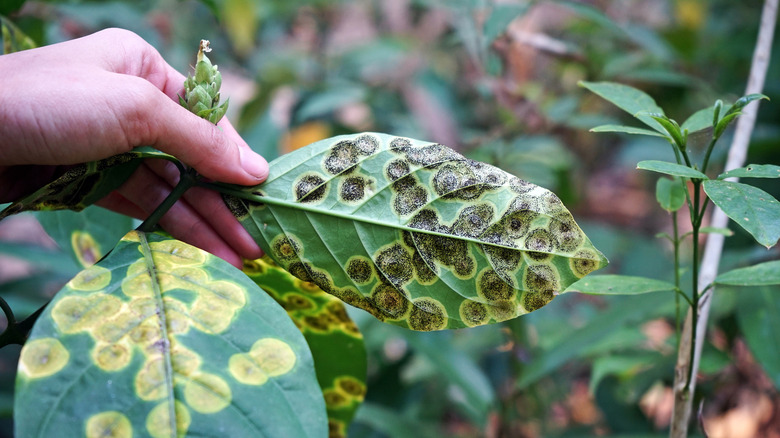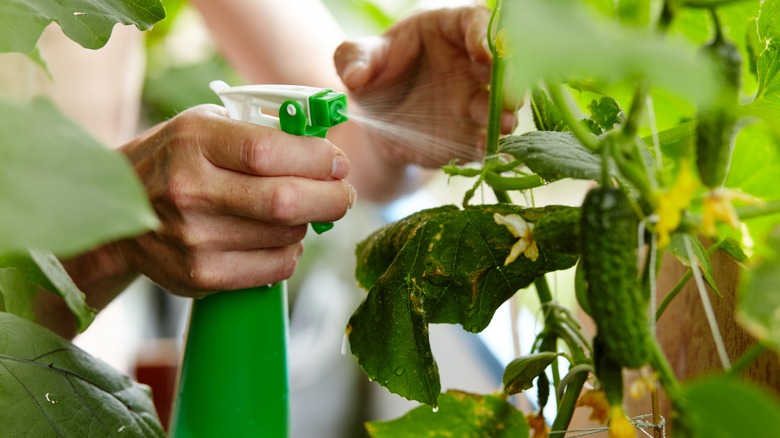The Kitchen Ingredients That'll Destroy Fungus In Your Garden
If you're a homeowner who tends to their garden diligently, you probably have a vision of what you'd love your yard to look like — an expanse of green land and brilliant flowers. However, a lot of work goes into achieving that, especially when making sure your environment doesn't get ridden with fungi, and we don't mean mushrooms. Globally, more than 19,000 fungus variants affect crops. Mold is responsible for many plant diseases that can wreak havoc and render months of hard work futile. You could use chemical fungicides, but not all of them are garden-safe and can damage your plants. In severe cases, the fungi could become resistant to the fungicide, and you'd have to keep using different types of chemicals to rid your yard of the plague. You could do all that, or you can run to your kitchen for some ingredients that are sure to free your garden from its fungal shackles. One DIY formula that can fix a multitude of problems is baking soda and its trusty sidekick, dish soap.
Naturally, fungi produce air-borne spores that can dwell on any surface. For them to thrive, the environmental conditions have to be favorable. This typically means hot, humid, and rainy weather, but some mold prefer the colder temperatures of winter months. Fungal attacks in your garden can look like necrosis, powdery mildew, rotting, leaf blight, and much more. Before these diseases ravage your precious garden, quickly use a baking soda and soap solution to banish that fungus.
The alkaline baking soda mixture will fend off the fungi
Prepare your fungus-punisher by mixing 1 teaspoon of baking soda with 3 drops of dish liquid soap and 1 liter of water. Use this same ratio depending on how large the infected area is. Pour the mixture into a spray bottle and let loose on the affected plants and grass to inhibit the activity of the fungi. This works like a charm because most fungi variants survive in highly acidic environments. Since baking soda is alkaline, it increases the pH of the surface, making the living conditions unfavorable for the fungi.
To ensure that the mold doesn't return to your garden, there are some measures you can imbibe into your care routine. Start watching when and how you water your garden. Too much moisture is a breeding ground for fungi. The best time to water your garden is usually in the morning so the excess can dry up during the day. If you water your garden at night, the ground will likely stay soaked. Also, avoid watering directly onto the plant. You want to water the ground, not the leaves. You should also give your plants some breathing room. No one likes to stay in a cramped space and neither do your veggies and herbs. Plants are living and breathing organisms, too, and with all those gasses moving around, you can bet that fungal infections would spread quickly.

